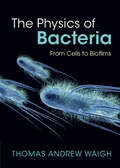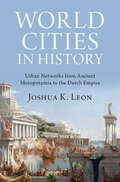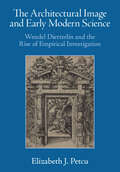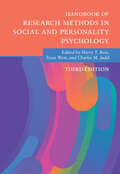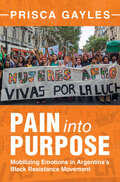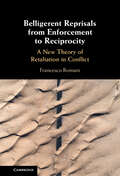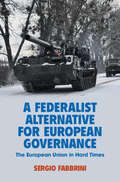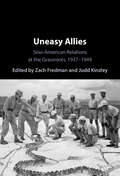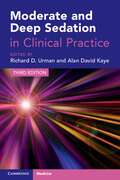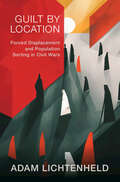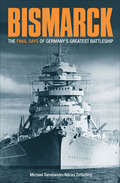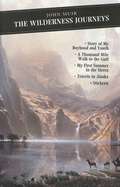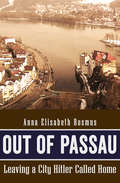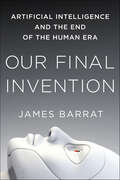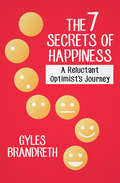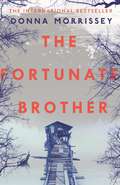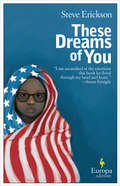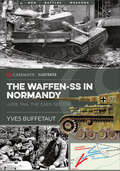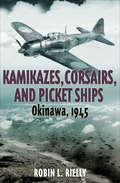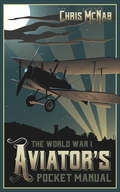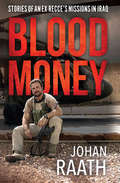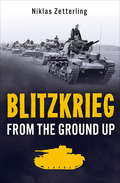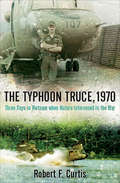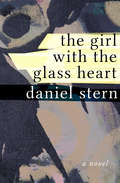- Table View
- List View
The Physics of Bacteria: From Cells to Biofilms
by Thomas Andrew WaighBacteria are the most ubiquitous life-forms on Earth, and are studied extensively to gain insight into their function and understand how they interact with their environment. In recent years, bacterial biophysics has added a new dimension to this research by using the tools of physics to investigate the quantitative principles that underpin these cellular systems. This book provides a modern and cohesive introduction to bacterial biophysics, with a focus on biofilms, slimes and capsules. In the first of three sections, key techniques and models from the physical sciences that can be applied to bacterial problems are presented. Section 2 then provides a bacterial microbiology primer for physical scientists and an examination of single-cell phenomena. The final section explores interacting bacteria and biofilms from a physical perspective. Ideal for physics graduates interested in this important field, this book is also relevant for researchers in physical chemistry, bioengineering, mathematics and microbiology.
World Cities in History: Urban Networks from Ancient Mesopotamia to the Dutch Empire
by Joshua K. LeonJoshua K. Leon explores 6,000 years of urban networks and the politics that drove them, from Uruk in the fourth millennium BCE to Amsterdam's seventeenth-century 'golden age.' He provides a fresh, interdisciplinary reading of significant periods in history, showing how global networks have shaped everyday life. Alongside grand architecture, art and literature, these extraordinary places also innovated ways to exert control over far-flung hinterlands, the labor of their citizens, and rigid class, race and gender divides. Asking what it meant for ordinary people to live in Athens, Rome, Chang'an, or Baghdad - those who built and fed these cities, not just their rulers - he offers one of the few fully rendered applications of world cities theory to historical cases. The result is not only vividly detailed and accessible, but an intriguing and theoretically original contribution to urban history.
The Architectural Image and Early Modern Science: Wendel Dietterlin and the Rise of Empirical Investigation
by Elizabeth J. PetcuThe Architectural Image and Early Modern Science: Wendel Dietterlin and the Rise of Empirical Investigation explores how architectural media came to propel scientific discourse between the eras of Dürer and of Rubens. It is also the first English-language book to feature the polymathic, eccentric, and long-misunderstood artist Wendel Dietterlin (c. 1550–1599). Here, Elizabeth J. Petcu reveals how architectural paintings, drawings, sculptures, and prints became hotbeds of early modern empiricism, the idea that knowledge derives from sensory experience. She demonstrates how Dietterlin's empirical imagery of architecture came into dialogue with the image-making practices of early modern scientists, a rapport that foreshadowed the intimate relationships between architecture and science today. Petcu's astute insights offer historians of art, science, and architecture a new framework for understanding the role of architectural images in the foundations of modern science. She also provides a coherent narrative regarding the interplay between early modern art, architecture, and science as a catalyst for modern empirical philosophy.
Handbook of Research Methods in Social and Personality Psychology (Cambridge Handbooks in Psychology)
by Charles M. Judd Harry T. Reis Tessa WestThis indispensable collection provides extensive, yet accessible, coverage of conceptual and practical issues in research design in personality and social psychology. Using numerous examples and clear guidelines, especially for conducting complex statistical analysis, leading experts address specific methods and areas of research to capture a definitive overview of contemporary practice. Updated and expanded, this third edition engages with the most important methodological innovations over the past decade, offering a timely perspective on research practice in the field. To reflect such rapid advances, this volume includes commentary on particularly timely areas of development such as social neuroscience, mobile sensing methods, and innovative statistical applications. Seasoned and early-career researchers alike will find a range of tools, methods, and practices that will help improve their research and develop new conceptual and methodological possibilities. Supplementary online materials are available on Cambridge Core.
Pain into Purpose: Mobilizing Emotions in Argentina's Black Resistance Movement (Afro-Latin America)
by Prisca GaylesPain into Purpose is a groundbreaking exploration of Argentina's Movimiento Negro (Black resistance movement). Employing a multi-year ethnography of Black political organizing, Prisca Gayles delves deep into the challenges activists face in confronting the erasure and denial of Argentina's Black past and present. She examines how collective emotions operate at both societal and interpersonal levels in social movements, arguing that activists strategically leverage societal and racialized emotions to garner support. Paying particular attention to the women activists who play a crucial role in leading and sustaining Argentina's Black organizations, the book showcases the ways Black women exercise transnational Black feminist politics to transform pain into purpose.
Belligerent Reprisals from Enforcement to Reciprocity: A New Theory of Retaliation in Conflict
by Francesco RomaniThis book challenges the traditional understanding of belligerent reprisals as a mechanism aimed at enforcing the laws of armed conflict. By re-instating reciprocity at the core of belligerent reprisals, it construes them as tools designed to re-calibrate the legal relationship between parties to armed conflict and pursue the belligerents' equality of rights and obligations in both a formal and a substantive sense. It combines an inquiry into the conceptual issues surrounding the notion of belligerent reprisals, with an analysis of State and international practice on their purpose and function. Encompassing international and non-international armed conflicts, it provides a first comprehensive account of the role of reprisals in governing legal interaction during wartime, and offers new grounds to address questions on their applicability, lawfulness, regulation, and desirability. This title is part of the Flip it Open Programme and may also be available Open Access. Check our website Cambridge Core for details.
A Federalist Alternative for European Governance: The European Union in Hard Times
by Sergio FabbriniHow did the European Union (EU) deal with the crises of the 2010s and 2020s? These crises arose in policy realms that were the province of national governments, so the European Council was the driving institution for managing them. National governments were able to take decisions, but their decisions were contradictory and unaccountable, and regularly hindered by divisions between them. In order to manage a policymaking process dominated by the claims of national and sub-regional governments, Sergio Fabbrini argues that intergovernmental governance has had to transform the EU into an international organization. Fabbrini shows that differentiated integration would further distance the EU from the project of an 'ever closer union' and, on the basis of a comparative federalism approach, he proposes an alternative paradigm of a multi-tier Europe with a federalist core to balance national sovereignties and supranational authority.
Uneasy Allies: Sino-American Relations at the Grassroots, 1937–1949
by Judd C. Kinzley Zach FredmanThis timely collection of essays examines Sino-American relations during the Second World War, the Chinese Civil War and the opening of the Cold War. Drawing on new sources uncovered in China, Taiwan, the UK and the US, the authors demonstrate how 'grassroots' engagements - not just elite diplomacy - established the trans-Pacific networks that both shaped the postwar order in Asia, and continue to influence Sino-US relations today. In these crucial years, servicemen, scientists, students, businesspeople, activists, bureaucrats and many others travelled between the US and China. In every chapter, this innovative volume's approach uncovers their stories using both Chinese and English language sources. By examining interactions among various Chinese and American actors in the dynamic wartime environment, Uneasy Allies reveals a new perspective on the foundations of American power, the brittle nature of the Sino-American relationship, and the early formation of the institutions that shaped the Cold War Pacific.
Moderate and Deep Sedation in Clinical Practice
by Richard D. Urman Alan David KayeWith the number of surgical procedures requiring sedation increasing every year, most hospitals and other facilities now have a procedural (moderate/deep) sedation program. The third edition of this popular handbook provides concise, practical, and evidence-based guidance on safe and effective procedural sedation. Featuring contributions from national experts, chapters cover the description/definition of sedation levels, patient evaluation, pharmacology, legal and quality assurance issues, as well as sedation for specific populations (ambulatory/office settings, elderly, pediatric, ICU, emergency room, endoscopy, reproductive technologies). The book also reviews the specific clinical and administrative considerations for the nursing and PA staff often involved in administering sedation. Comprehensively updated to incorporate the most current, evidence-based information including updates to existing guidelines, patient outcomes data from the most recently published papers and expanded sedation-related content in sub-specialties. An essential manual for a wide array of healthcare providers to develop safer techniques, policies, and procedures for moderate and sedation.
Guilt by Location: Forced Displacement and Population Sorting in Civil Wars
by Adam LichtenheldPopulation displacement is a devastating feature of contemporary conflict with far-reaching political and humanitarian consequences. This book demonstrates the extent to which displacement is a deliberate strategy of war, not just a consequence of it. Moving beyond instances of ethnic cleansing, Adam Lichtenheld draws on field research in Uganda and Syria; case studies from Burundi, Indonesia, and Vietnam; and an original dataset of strategic displacement in 166 civil wars to show that armed groups often uproot civilians to sort the targeted population, not to get rid of it. When lacking information about opponents' identities and civilians' loyalties, combatants use human mobility to infer wartime affiliations through 'guilt by location'. Different displacement strategies occur in different types of civil wars, with some relying on spatial profiling, rather than ethnic profiling. As displacement reaches record highs, Lichtenheld's findings have important implications for the study of forced migration and policy responses to it.
Bismarck: The Final Days of Germany's Greatest Battleship
by Niklas Zetterling Michael TamelanderThe author of Blitzkrieg covers one of the most dramatic events of the Second World War in an &“outstanding book about naval warfare&” (World War II History). When the German battleship Bismarck—a masterpiece of engineering, well-armored with a main artillery of eight 15-inch guns—left the port of Gotenhafen for her first operation on the night of May 18, 1941, the British battlecruiser Hood and the new battleship Prince of Wales were ordered to find her quickly, as several large convoys were heading for Britain. On May 24, Bismarck was found off the coast of Greenland, but the ensuing battle was disastrous for the British. The Hood was totally destroyed within minutes, with only three crewmen surviving, and Prince of Wales was badly damaged. The chase resumed until the German behemoth was finally caught, this time by four British capital ships supported by torpedo-bombers from the carrier Ark Royal. The icy North Atlantic roiled from the crash of shellfire and bursting explosions until finally the Bismarck collapsed, sending nearly two thousand German sailors to a watery grave. Tamelander and Zetterling&’s work rests on stories from survivors and the latest historical discoveries. The book starts with a thorough account of maritime developments from 1871 up to the era of the giant battleship, and ends with a vivid account, hour by hour, of the dramatic and fateful hunt for the mighty Bismarck, Nazi Germany&’s last hope to pose a powerful surface threat to Allied convoys. &“Exciting story-telling . . . recreat[es] the thrill of the hunt.&” —International Journal of Maritime History &“[An] epic sea chase and its vivid, human details.&” —World War II
The Wilderness Journeys: My Boyhood And Youth - First Summer In The Sierra - 1000 Mile Walk - Stickeen - Travels In Alaska (Canongate Classics #Vol. 67)
by John MuirFive works by the naturalist considered the father of the modern conservation movement, documenting the unspoiled beauty of nineteenth-century America. When we try to pick out anything by itself, we find it hitched to everything else in the universe. —John Muir, My First Summer in the Sierra The name of John Muir has come to stand for the protection of wild land and wilderness in both America and Britain. Born in Scotland in 1838, Muir is famed as the father of American conservation and the founder of the Sierra Club. This collection, including the rarely seen Stickeen, presents the finest of Muir&’s writings, painting a portrait of a man whose generosity, passion, and vision are an inspiration to this day. Combining acute observation, amusing anecdotes, and a sense of inner discovery, Muir&’s writings of his travels though some of the greatest landscapes on Earth, including the Carolinas, Florida, Alaska, and those lands that were to become the great National Parks of Yosemite and the Sierra Valley, raise an awareness of nature to a spiritual dimension. Includes an introduction by Graham White
Out of Passau: Leaving a City Hitler Called Home
by Anna Elisabeth RosmusThe true story behind the film The Nasty Girl: A memoir by a German woman who uncovered her hometown&’s war crimes and complicity with the Nazis. Nestled along the Danube in southern Germany, Passau is a pleasant tourist destination known for its historic buildings and scenic views at the intersection of three rivers. But for decades, the small Bavarian city suppressed an intimate association with Adolf Hitler and the Third Reich. Born in Passau in 1960, Anna Rosmus discovered those dark secrets as a teenager—sordid stories of slave labor, forced abortions, and a massacre of Russian POWs. In 1994, she set out to commemorate the forgotten Holocaust victims who had died there, expecting little if any controversy. What she encountered instead was an obstructionist city council, a virulently resentful local population, and an unsettling degree of latent anti-Semitism in a town whose several hundred Jewish citizens had been sent to concentration camps. Eventually the death threats led to her own emigration from Germany to the United States. Anna Rosmus has been hailed by Marc Fisher of the Washington Post as &“a rigorous researcher burning with a passion to tell the story that must be told.&” In Out of Passau, she explores not only the disturbing World War II history of her hometown, but also the life-changing fallout that resulted from her determination to recognize those who had lost their lives.
Our Final Invention: Artificial Intelligence and the End of the Human Era
by James BarratElon Musk named Our Final Invention one of five books everyone should read about the future—a Huffington Post Definitive Tech Book of 2013.Artificial Intelligence helps choose what books you buy, what movies you see, and even who you date. It puts the “smart” in your smartphone and soon it will drive your car. It makes most of the trades on Wall Street, and controls vital energy, water, and transportation infrastructure. But Artificial Intelligence can also threaten our existence.In as little as a decade, AI could match and then surpass human intelligence. Corporations and government agencies are pouring billions into achieving AI’s Holy Grail—human-level intelligence. Once AI has attained it, scientists argue, it will have survival drives much like our own. We may be forced to compete with a rival more cunning, more powerful, and more alien than we can imagine.Through profiles of tech visionaries, industry watchdogs, and groundbreaking AI systems, Our Final Invention explores the perils of the heedless pursuit of advanced AI. Until now, human intelligence has had no rival. Can we coexist with beings whose intelligence dwarfs our own? And will they allow us to?“If you read just one book that makes you confront scary high-tech realities that we’ll soon have no choice but to address, make it this one.” —The Washington Post“Science fiction has long explored the implications of humanlike machines (think of Asimov’s I, Robot), but Barrat’s thoughtful treatment adds a dose of reality.” —Science News“A dark new book . . . lays out a strong case for why we should be at least a little worried.” —The New Yorker
The 7 Secrets of Happiness: A Reluctant Optimist's Journey
by Gyles BrandrethLovable British comedian Gyles Brandreth&’s look at the pursuit of happiness and why it matters—refreshingly free of wishy-washy, feel-good mumbo-jumbo and full of straightforward, down-to-earth guidanceOn June 17, 2013, Gyles Brandreth delivered the Baggs Memorial Lecture at the University of Birmingham—an annual conference on the theme of happiness and how it can be achieved. His speech was met with thunderous applause and a widespread demand to know more about the secrets of being happy, so he set about writing this poignant book of truths, sprinkled with British wit and humor throughout.With extensive research backing him, Brandreth travels the world over and meets numerous luminary figures, asking the questions: What is happiness? Who gets to be happy? For the queen of Denmark, it is finding happiness in routine; for Sheikh Raschid al Maktoum, it is the certainty of being confident in yourself when others doubt you; for Rod Stewart, it is taking pleasure in the simple things.Through fascinating anecdotes by the likes of Archbishop Desmond Tutu and renowned psychiatrist Dr. Anthony Clare, Brandreth explains why you need to know the seven secrets of happiness and why you need them now.
The Fortunate Brother
by Donna MorrisseyThe acclaimed author of Sylvanus Now continues her rural Newfoundland family saga with this award-winning, international bestselling novel. Life for Kyle Now and his siblings was never easy in the Canadian fishery village where they grew up. But with adulthood come both freedom and regret. Kyle certainly regrets urging his brother Chris to go west—only for him to find work, and then his death, on an oil rig. Now death appears to be haunting the family: Kyle&’s mother Addie receives a troubling diagnosis, and his father Sylvanus has yet to give up drinking. With his sister Sylvie adrift somewhere in the world, Kyle would seem to be the fortunate one… until the body of a local thug washes up on the family wharf. The third novel in Donna Morrissey&’s Now family saga, The Fortunate Brother is a dark, atmospheric novel about the aftermath of a murder in a claustrophobic rural community in Newfoundland. Compassionate and wise, beautiful and brutal, it is the story of a family and a community in turmoil that confirms Donna Morrissey's place as one of Canada's foremost storytellers. Winner of the 2017 Arthur Ellis Awards for Excellence in Canadian Crime Writing, Best Novel Winner of the 2017 Thomas Raddall Atlantic Fiction Award
These Dreams of You
by Steve Erickson&“Set against the backdrop of Obama&’s ascendancy to the presidency . . . A complex and imaginative literary tapestry about family and identity&” (Kirkus Reviews, starred review). At once immediate and epic, funny and devastating, this new novel by the author of Shadowbahn is a transcendent dispatch from the intersection of art and politics, passion and memory. One November night in a canyon outside Los Angeles, Zan Nordhoc—a failed novelist turned pirate radio DJ—sits before the television with his small, adopted black daughter, watching the election of his country&’s first black president, Barack Obama. In the nova of this historic moment, with an economic recession threatening their home, Zan, his wife, and their son set out to solve the enigma of the little girl&’s life. When they find themselves scattered and strewn across two continents, a mysterious stranger with a secret appears, who sends the story spiraling forty years into the past. Sweeping from 1960s London and &’70s Berlin to twenty-first-century California, and the beginning-of-civilization Ethiopia, These Dreams of You chronicles not only a family struggling to salvage its bonds but a twelve-year-old boy readying himself for what the years to come hold. &“Truly electrifying. In its gorgeous, vivid prose and its acutely sensitive soul, These Dreams of You shows us just what a novel can still do in our own crazy times.&” —The Boston Globe &“Drama filled with exuberance.&” —The Washington Post &“The four Nordhocs who provide the messy, vibrant heart of These Dreams of You make up a representative tableau for the new millennium: the American family as mash-up.&” —The New York Times Book Review
The Waffen-SS in Normandy: June 1944, The Caen Sector (Casemate Illustrated #Cis0003)
by Yves BuffetautThe actions of Germany&’s armed SS force during D-Day in the series that&’s &“a welcome addition . . . targeted at the general World War II enthusiast&” (Globe at War). For many, the Waffen-SS soldier represents the archetype of the combatant, if not the warrior: well-armed, well-trained, possessing intelligence in combat, imbued with political and ideological fanaticism, he is an elite soldier par excellence, even if a lack of scruples casts a long shadow. However, is this picture true? In the case of the Battle of Normandy, opinions diverged, not only among today&’s historians, but also amongst the German generals at the time. In all, the Waffen-SS fielded six divisions during the Battle of Normandy, as well as two heavy battalions of Tiger tanks. But they were by no means a single homogenous entity, for with the exception of II SS-Panzerkorps, the divisions arrived at the front one after another and were immediately thrown into battle. This volume in the Casemate Illustrated series examines the Waffen-SS in Normandy during the fierce fighting of June 1944, when they struggled to hold back the Allied advance on Caen, though the picture was by no means one-sided. Extensively illustrated with photographs, tank profiles, and maps, and accompanied by biographies of key personnel and explanatory text boxes, this volume gives a clear and accessible account of events, challenging some popular perceptions along the way.
Kamikazes, Corsairs, and Picket Ships: Okinawa 1945
by Robin L. RiellyThe untold story of ferocious air and naval combat during the WWII Battle of Okinawa—drawn from primary sources and survivor interviews. This is the story of an overlooked yet significant aerial and naval battle during the American assault on Okinawa in the spring of 1945. While losses to America&’s main fleet are well recorded, less well known is the terrific battle waged on the radar picket line, the fleet&’s outer defense against Japanese marauders. Weaving together the experiences of the ships and their crews—drawn from ship and aircraft action reports, ship logs, and personal interviews—historian Robin L. Reilly recounts one of the most ferocious air and naval battles in history. The US fleet—and its accompanying airpower—was so massive that the Japanese could only rely on suicide attacks to inflict critical damage. Of the 206 ships that served on radar picket duty, twenty-nine percent were sunk or damaged by Japanese air attacks, making theirs the most hazardous naval surface duty in World War II. The great losses were largely due to relentless kamikaze attacks, but also resulted from the improper use of support gunboats, failure to establish land-based radar at the earliest possible time, the assignment of ships ill-equipped for picket duty, and, as time went on, crew fatigue. US air cover during the battle is also described in full, as squadrons dashed from their carriers and land bases to intercept the Japanese swarms, resulting in constant melees over the fleet.
The World War I Aviator's Pocket Manual (The Pocket Manual Series)
by Chris McNabHow the first military pilots learned to fly—and fight: guidance from Great War training manuals. Aviation was still in its infancy when World War I broke out—and newly formed air forces produced manuals to help pioneers heading for the skies as they took warfare into a new dimension with reconnaissance missions, primitive bombing attempts, and attacks on enemy aircraft. Pulling together information from British manuals such as A Few Hints for the Flying Officer and Practical Flying, as well as American, German, and French training guides, this book shows the type of information the pilots were given, such as: · The basics of how to care for, start, and fly an aircraft · Tactics and strategy in the air · Identifying whether vehicles below were friend or foe · Interacting with mechanics · Coordinating with army or naval forces, and more This fascinating time capsule opens up the world of the Great War aviator and includes introductions to the manuals by Chris McNab, setting them in context and providing background.
The Last Supper: The Plight of Christians in Arab Lands
by Klaus Wivel&“A compelling story of the ethnic cleansing of Christian communities caught in the crossfire of the Middle East at war . . . Urgent and passionate&” (Kirkus Reviews). In 2013, alarmed by scant attention paid to the hardships endured by the 7.5 million Christians in the Middle East, journalist Klaus Wivel—who practices no religion himself—traveled to Iraq, Lebanon, Egypt, and the Palestinian territories on a quest to learn more about their fate. He found an oppressed minority, constantly under threat of death and humiliation, increasingly desperate in the face of rising Islamic extremism and without hope that their situation would improve, or anyone would come to their aid. Wivel spoke with priests whose churches have been burned, citizens who feel like strangers in their own countries, and entire communities whose only hope for survival may be fleeing into exile. With the increase of religious violence in recent years, The Last Supper is a prescient and unsettling account of a severely beleaguered religious group living, so it seems, on borrowed time. In this book, Wivel recounts this humanitarian crisis in detail and asks why we have we not done more to protect these people.
Blood Money: Stories of an Ex-Recce's Missions in Iraq
by Johan RaathA former Special Forces soldier—and presidential bodyguard—shares heart-stopping stories of his time as a private military contractor in Iraq.“I remember the cracking sound of the AK-47 bullets as they tore through our windscreen . . . A piece of bullet struck my bulletproof vest in the chest area and another piece broke off and lodged in my left forearm.”Johan Raath and a security team were ambushed in May 2004 while on a mission to reconnoiter a power plant south of Baghdad for an American firm. He had been in the country for only two weeks. This was a taste of what was to come over the next few years as he worked as a private military contractor (PMC) in Iraq.His mission? Not to wage war, but to protect lives. Raath and his team provided security for engineers working on reconstruction projects in Iraq. Whether in the notorious Triangle of Death, in the deadly area around Ramadi, or in the faction-ridden Basra, Raath had numerous hair-raising experiences.Key to his survival was his training as a Special Forces operator, or Recce.This riveting account offers a rare glimpse into the world of private military contractors and the realities of everyday life in one of the world’s most violent conflict zones.
Blitzkrieg: From the Ground Up
by Niklas ZetterlingFrom the author of Bismarck: &“A work of simply outstanding scholarship . . . unreservedly recommended for . . . World War II Military History collections&” (Midwest Book Review). The successes of the German Blitzkrieg in 1939-41 were as surprising as they were swift. Allied decision-makers wanted to discover the Germans&’ secrets, even though only partial, incomplete information was available to them. The false conclusions drawn became myths about the Blitzkrieg that have lingered for decades. It has been argued that rather than creating a new way of war based on new technology, the Germans fitted the new weapons into their existing ideas on warfare. The conduct of German soldiers, particularly the lower-ranking men, on the battlefield was at the core of the concept, and German victories rested upon the quality, flexibility, and mobility of the small combat units. This book focuses on the experiences of the enlisted men and junior officers in the Blitzkrieg operations in Poland, Norway, Western Europe, and Russia. Using accounts previously unpublished in English, military historian Niklas Zetterling &“not only shows you the big picture, economically, strategically, but also takes you right into the Panzers,&” showing how a company commander led his tanks, how a crew worked together inside a tank, and the role of the repair services. &“For those of us who are interested in the tactics and strategy of the early war years, it is a book you won&’t want to miss&” (A Wargamers Needful Things). &“In support of his convincing argument the author uses several accounts of German actions seen through the eyes of the soldiers and junior officers who had to put theory into practice on the battlefield. 4.5 stars.&” —Army Rumour Service
The Typhoon Truce, 1970: Three Days in Vietnam when Nature Intervened in the War
by Robert F. CurtisThis military history chronicles a time during the Vietnam War when fighting stopped and the 101st Airborne helped those in need during a natural disaster. For three days during the Vietnam War, it wasn&’t rockets or artillery that came through the skies, but a horrific force of nature that suddenly put both sides in awe. When Super Typhoon Joan arrived in October 1970, an unofficial truce began. Air crewman faced masses of Vietnamese civilians outside their base perimeters for the first time. Could we trust them not to shoot? Could they trust us not to drop them off in a detention camp? Truces never last, but while they do, life changes for everyone involved. The &“typhoon truce&” stopped the war for three days in northern I Corps—that area bordering the demilitarized zone separating South Vietnam from North. Then, less than a week later, Super Typhoon Kate hit the same area with renewed fury. As the entire countryside was flooded, the people faced war and natural disaster at the same time. No one but the Americans had the resources to help the people who lived in the lowlands, and so they did. The everyday dangers they faced were only magnified by low clouds and poor visibility. But the aircrews of the 101st Airborne went out to help anyway. In this book, we see how, for a brief period during an otherwise vicious war, saving life took precedence over bloody conflict.
The Girl with the Glass Heart: A Novel
by Daniel SternElly Kaufman is too young, too beautiful, and too intense to accept life on its own terms; instead, she creates havoc in the world around herIn postwar Indianapolis, young dreamer Elly is navigating adolescence in a tight-knit family. Her search for truth leads her through a variety of experiences—and loves. To a famous architect, she is a symbol of undying youth; to a struggling actor, she is the unspoiled image of creative will; to an ex-GI, she is a thief; to a young musician, she is the source of inspiration. But what will Elly be to herself?
